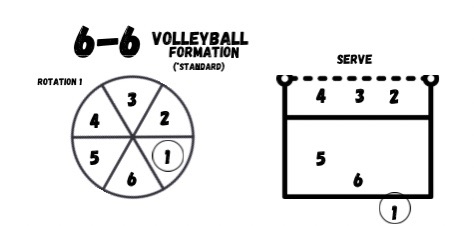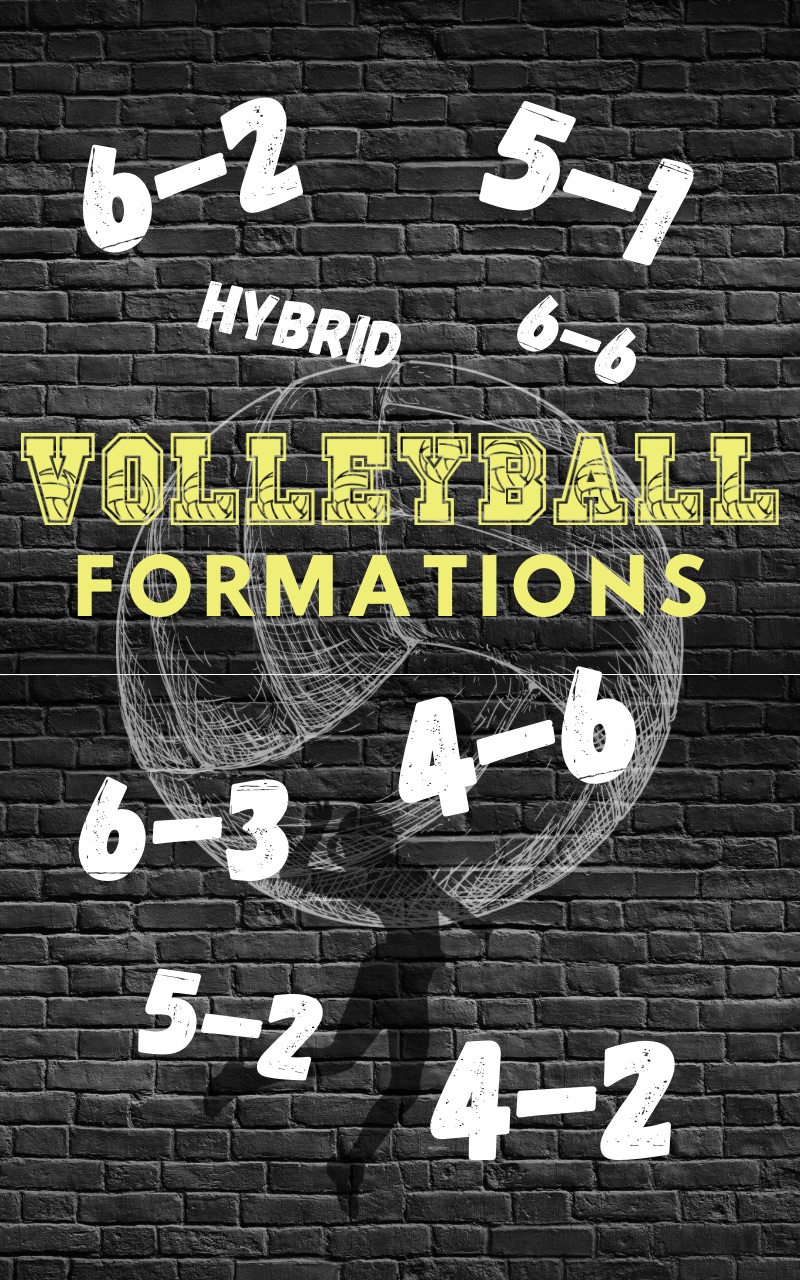
|
Different Volleyball Offenses
| |
|
[BACK]
6-6 The 6-6 offense in volleyball is used with youth programs and is a relatively uncommon system that can be particularly effective in certain situations. In this setup, all six players who play right back will be the next setter during that rotation. For hitters, you will always have three in the front row. While it offers maximum flexibility in terms of creating plays, it can be complex and challenging to execute effectively. The 6-6 offense is typically chosen by teams with versatile players who excel in both setting and attacking, making it possible to keep the opposition guessing while maintaining a fluid and unpredictable offensive game. NOTE: It is mainly used as a Development system as everyone gets to set and hit, while only needing to know only 1 rotation. rotation 1 example: 
For more information and diagrams for each position on each rotation in a "6-2" volleyball offense Click here for our ebook about "Volleyball Rotations" The 6-6 offense in volleyball is a relatively rare and unconventional system. As such, it presents unique advantages and disadvantages: Advantages of the 6-6 Offense: 1. Unpredictability: The 6-6 system can be highly unpredictable, as all six players are potential setters and attackers, making it difficult for opponents to anticipate plays. 2. Versatility: This offense offers maximum flexibility in creating plays and varied attack options due to every player’s potential to set or attack. 3. Fluid Transition Play: The 6-6 system excels in transition play, as there’s no need for substitutions, and all players are equipped to set and attack. 4. Adaptability: Teams can quickly transition from a traditional 6-6 to other systems (e.g., 5-1 or 6-2) if needed, offering a high level of adaptability. 5. Great for Development: For youth teams, this is a great learning experience. It gives each member a chance to set and hit in order to gain experience. Disadvantages of the 6-6 Offense: 1. Complexity: The 6-6 offense can be intricate and challenging to execute due to the requirement for every player to be proficient in setting and attacking. 2. Communication Complexity: With all players potentially setting and attacking, communication can become more complex, increasing the risk of misunderstandings and coordination issues. 3. Complex Rotations: The rotations in the 6-6 system can be complex, potentially confusing for less experienced players. 4. Limited Defensive Specialists: The system may lack specialized defensive players (liberos or defensive specialists), which can affect the team’s overall defensive capabilities. The 6-6 offense offers an exciting and unpredictable style of play, but it also presents challenges related to complexity, communication, and the potential for specialized player roles. Teams considering this system should weigh the advantages against the complexities and potential downsides carefully. For more information and diagrams for each position on each rotation in a "6-2" volleyball offense Click here for our ebook about "Volleyball Rotations" |

Amazon associate  Purchase Ebook on Amazon Purchase Ebook on Amazon
|
Volleyball techniques Volleyball strategies Volleyball drills Volleyball skills Volleyball fundamentals Volleyball tips Volleyball training Volleyball coaching Volleyball playbook Volleyball exercises Volleyball equipment Volleyball gear Volleyball practice Volleyball coaching tips Volleyball playing tips Volleyball tutorials Volleyball lessons Volleyball techniques for beginners Volleyball skills development Volleyball coaching tools Volleyball teaching aids Volleyball improvement tips Volleyball tactics Volleyball game strategies Volleyball mental preparation Volleyball injury prevention Volleyball nutrition tips Volleyball warm-up routines Volleyball conditioning exercises








